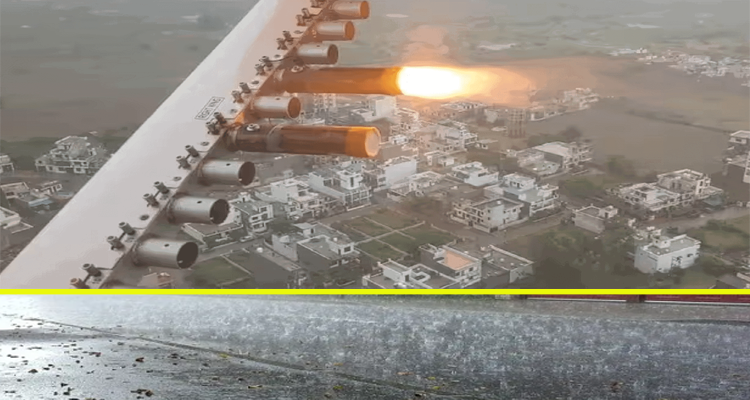by Ashis Sinha
Researchers from the Indian Institute of Technology-Kanpur (IIT-K) have accomplished a significant milestone by successfully conducting a test of artificial rain through cloud seeding on 21 June.
The experimental trial received authorization from the Directorate General of Civil Aviation (DGCA) and represents a crucial step towards implementing this technology on a practical scale.
This groundbreaking technique aims to artificially create rainy conditions, offering potential solutions to combat dry weather and air pollution.
During the test, a Cessna aircraft took off from the IIT Kanpur airfield, ascending to an altitude of 5000 feet. Employing cloud seeding technology, the aircraft dispersed a specialized powder into the clouds, resulting in the formation of raindrops and subsequent rainfall in the surrounding area. The successful outcome of this experiment indicates the efficacy of artificial rain creation.
Led by Professor Manindra Agrawal from the Department of Computer Science and Engineering at IIT Kanpur, the artificial rain project marks a significant achievement. Professor Agrawal expressed his satisfaction, stating, “Our capabilities in this area have been validated through successful testing.”
It took IIT-Kanpur six years to accomplish this artificial rain project after the Uttar Pradesh government sought assistance for Bundelkhand in 2017.
At that time China possessed this technology, agreed to do cloud-seeding in Mahoba for Rs 10.30 lakh per kilometre but refused to share the technology and know-how and the plan with India.
Consequently, the scientists at IIT Kanpur undertook the endeavor to develop their own expertise, leading to their eventual success. Importantly, this technology is environmentally sustainable, offering a long-term solution to water scarcity.
This innovative cloud seeding technique holds particular significance for regions grappling with drought, such as Bundelkhand in Uttar Pradesh. By generating artificial clouds and stimulating rainfall, this approach has the potential to provide much-needed relief to these areas.




